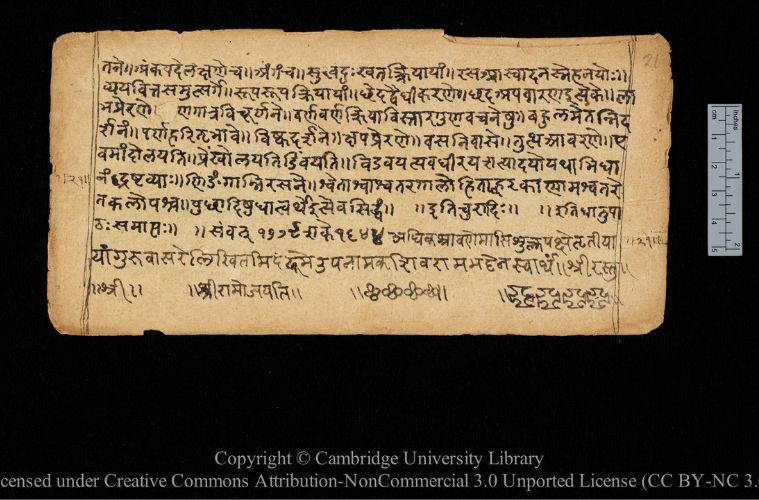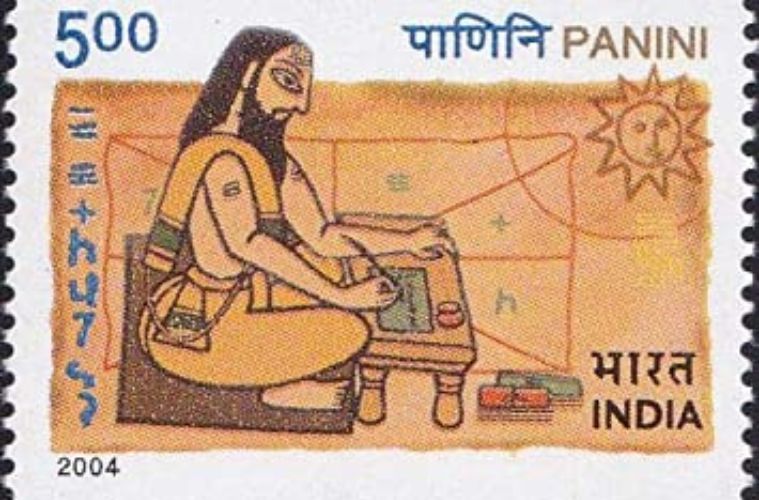Dr Rishi Rajpopat, a PhD candidate at Cambridge University, has solved a long-standing grammar problem in the Ashtadhyayi — a Sanskrit text written by the scholar Panini around the 6th or 5th century BCE.
Comprising 4000 sutras, the Ashtadhyayi explains the science behind Sanskrit, and has often been compared to the Turing machine due to its complex set of rules for creating words — a linguistic algorithm of sorts. Using it, you can feed in the base and suffix of any Sanskrit word, and produce grammatically correct words and sentences. However, two or more of Panini’s grammar rules can apply at the same time, which has often been a source of confusion.

To resolve these conflicts, Panini had written a ‘meta-rule’ (rule governing rules), which had traditionally been interpreted as: ‘In the event of a conflict between two rules of equal strength, the rule that comes later in the serial order of the Ashtadhyayi wins’.
But in his PhD thesis, aptly titled In Panini We Trust, Dr Rajpopat has rejected this system, choosing to go with a simpler interpretation of Panini’s sutras that stays loyal to the text.
He argues that the meta-rule has always been misunderstood; what Panini really meant, was that for rules applying to the left and right sides of a word, readers should use the right-hand side operation. Using this logic, Dr Rajpopat found that the Ashtadhyayi could act as an accurate ‘language machine’, producing grammatically sound Sanskrit words and sentences almost every time.

Experts are calling Dr Rajpopat’s findings ‘revolutionary’, as the discovery will allow Panini’s Sanskrit grammar to be taught to computers for the first time. The linear and exact nature of the Ashtadhyayi‘s rules also make it suited for natural language processing (NLP) systems, as seen in the viral ChatGPT bot.
“Computer scientists working on NLP gave up on rule-based approaches over 50 years ago,” says Dr Rajpopat, “so teaching computers how to combine the speaker’s intention with Pāṇini’s rule-based grammar to produce human speech would be a major milestone in the history of human interaction with machines, as well as in India’s intellectual history.”
Sanskrit has less than 25,000 known speakers in India, but casual interest has been rising over the last decade. Panini is widely regarded as the ‘father of linguistics’, with his work having influenced European scholars since the 1800s.
More on the ‘Ashtadhyayi’

The Ashtadhyayi is an eight-chapter treatise on the morphology (structure), semantics, and syntax (order) of classical Sanskrit, as laid out by the grammarian and philologist Daksiputra Panini. It treats the language as formulaic and rule-bound — engineered, in a sense — and offers differences between how Sanskrit is spoken, versus how it ought to be used in sacred texts.
Apart from building a descriptive language model, the Ashtadhyayi has also been used to glean cultural and geographic information about ancient India. Pāṇini likely lived in the Gandhara region, which today lies in northwest Pakistan and parts of southeast Afghanistan.
This story is part of Express Puzzles & Games, which aims to make language fun with daily crosswords, special puzzles and trivia-rich quizzes. Sign up to start playing, or follow @iepuzzles on Instagram for updates.












![Best Weight Loss Supplements [2022-23] New Reports!](https://technologytangle.com/wp-content/uploads/2022/12/p1-1170962-1670840878.png)




